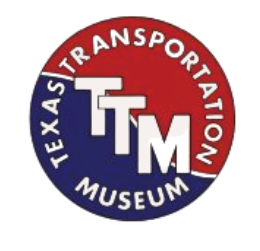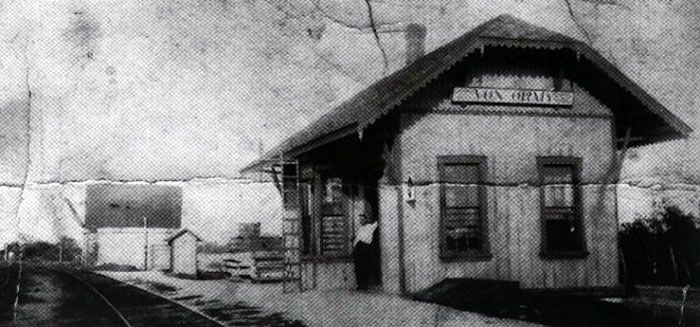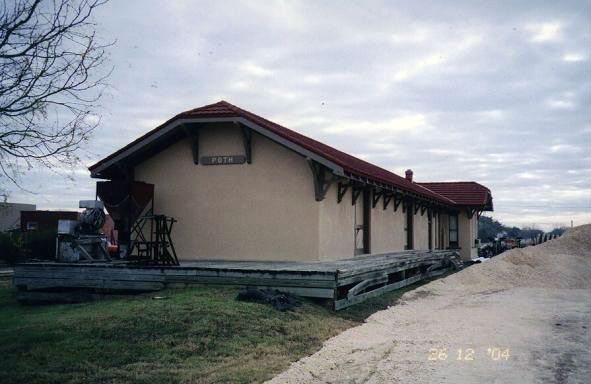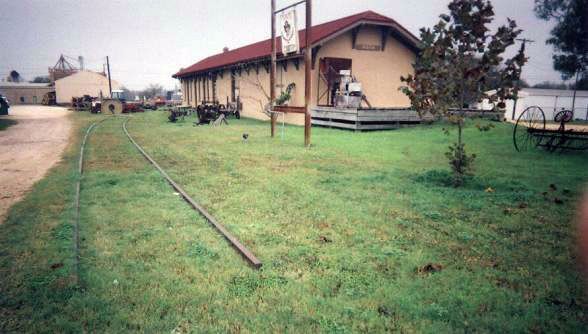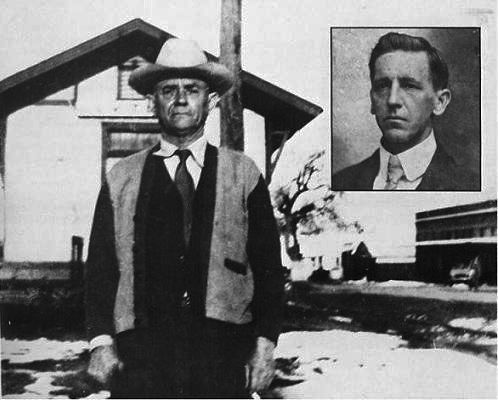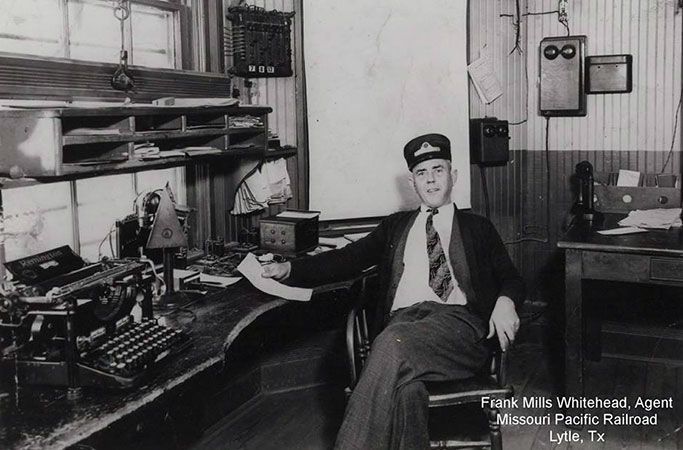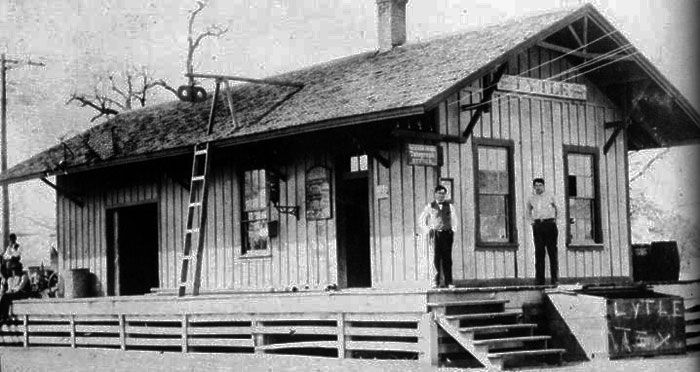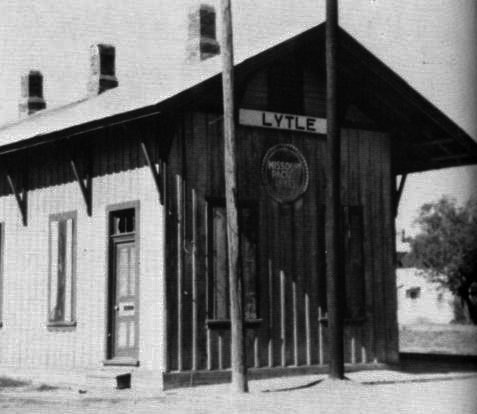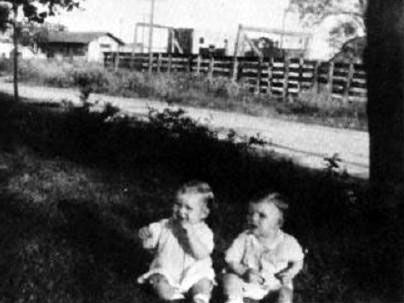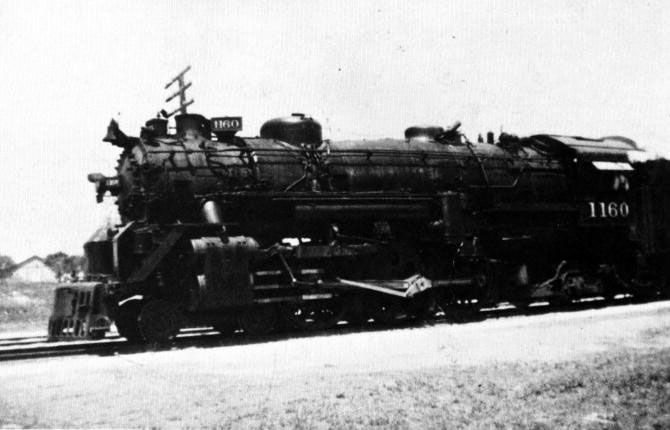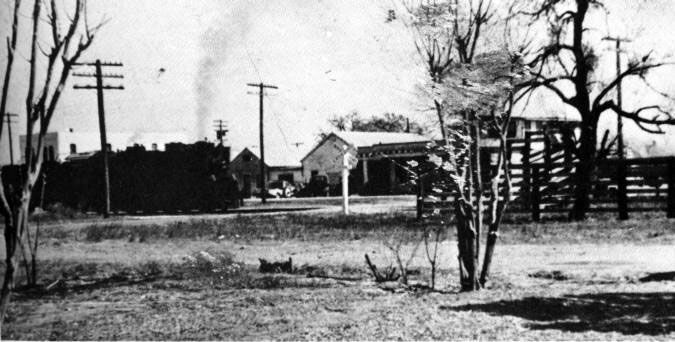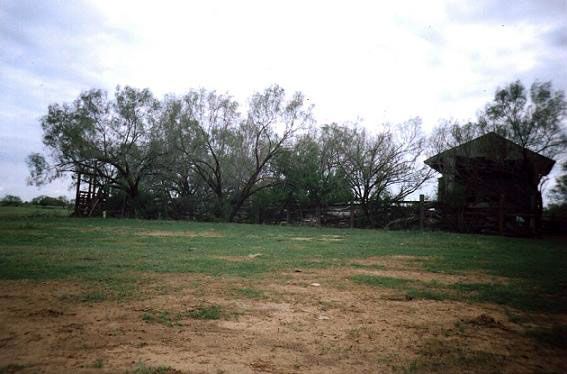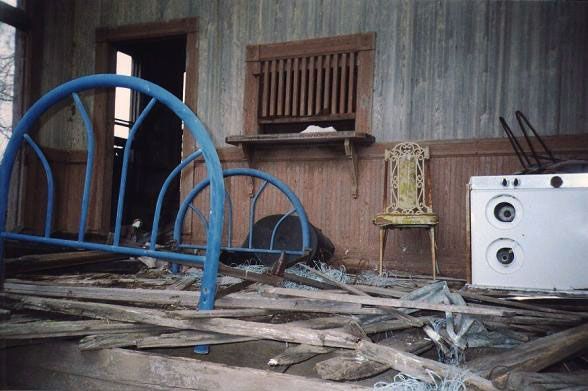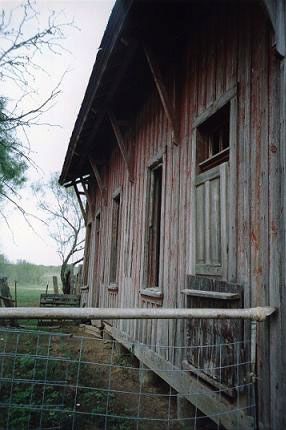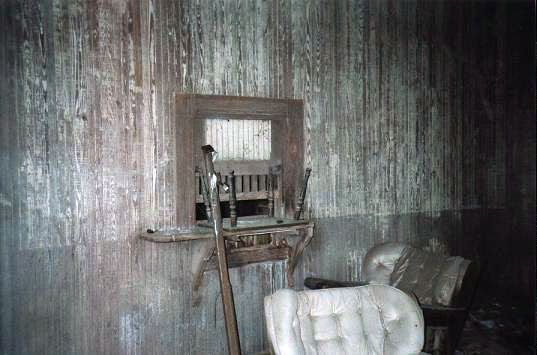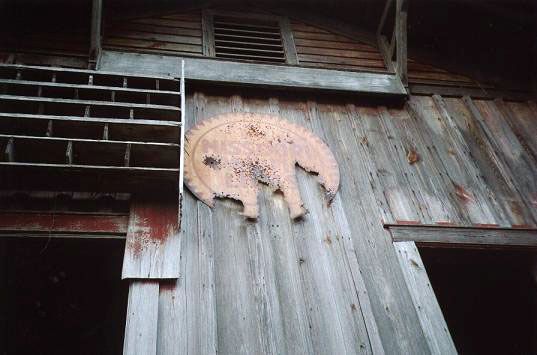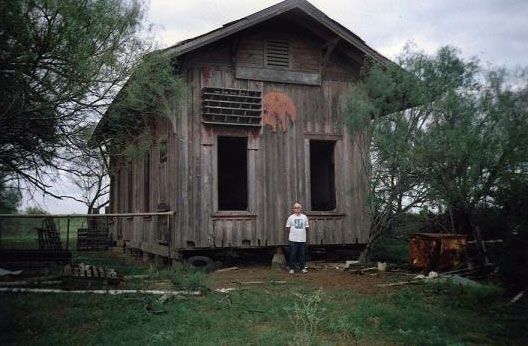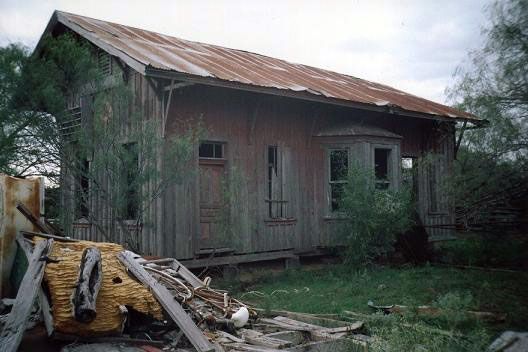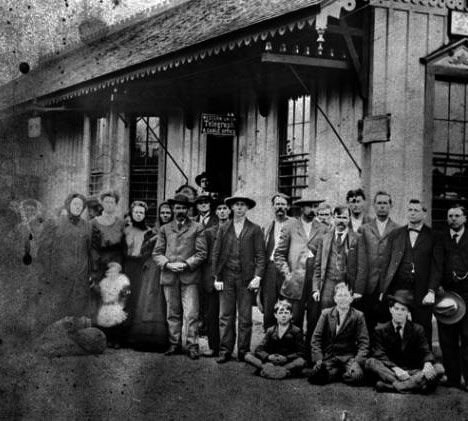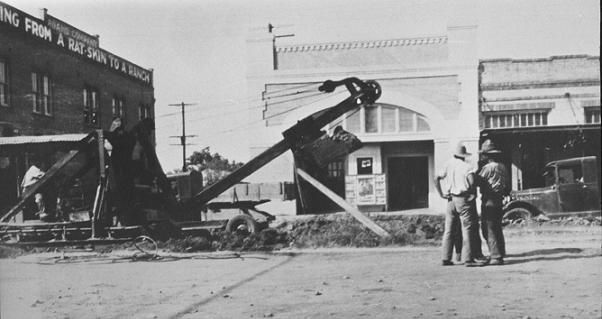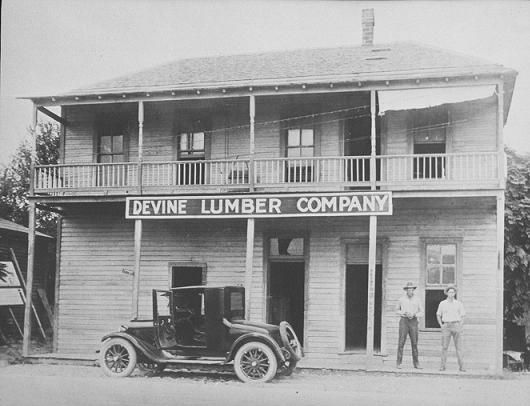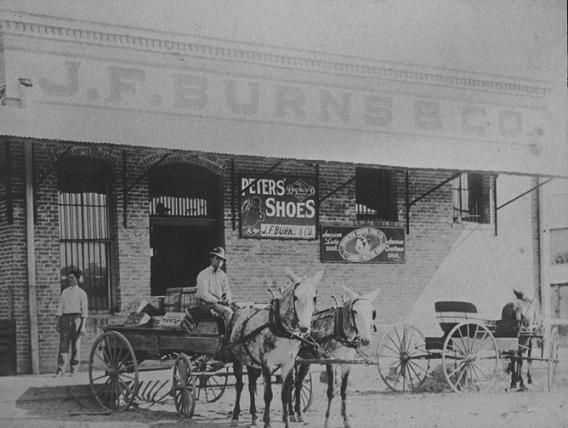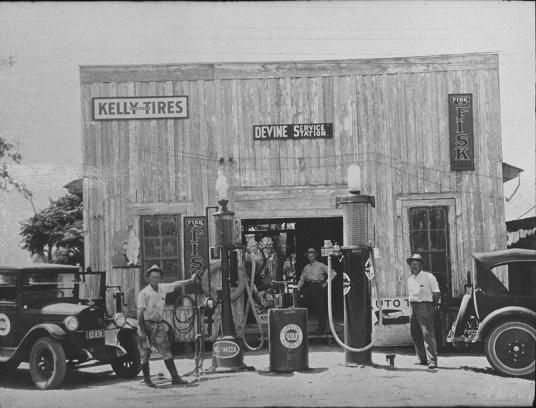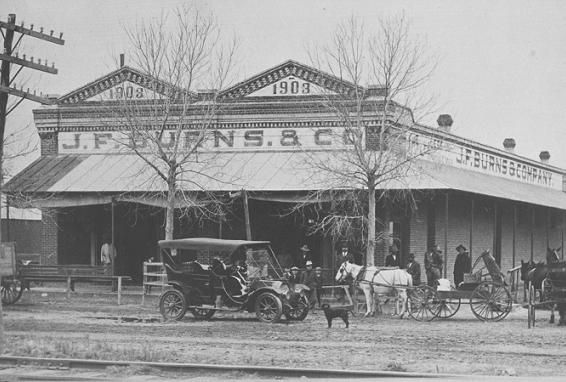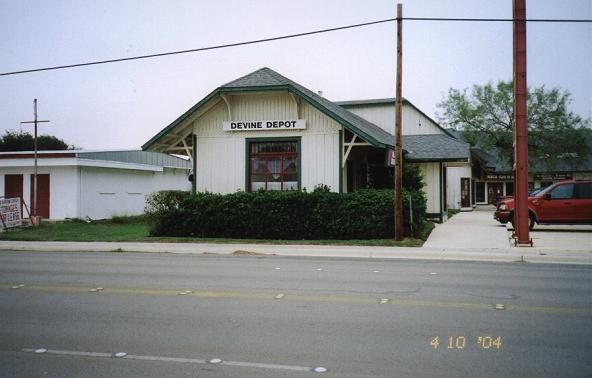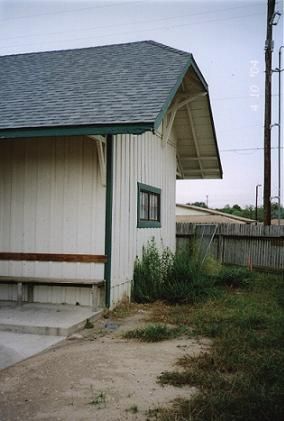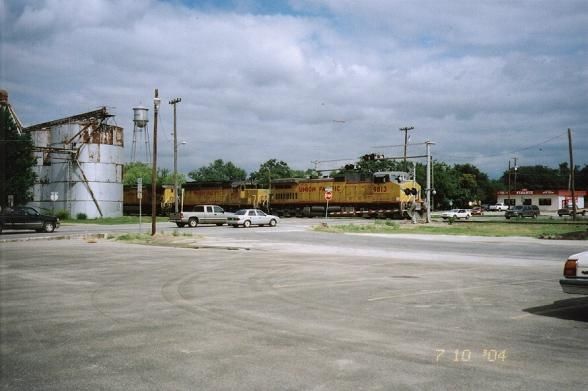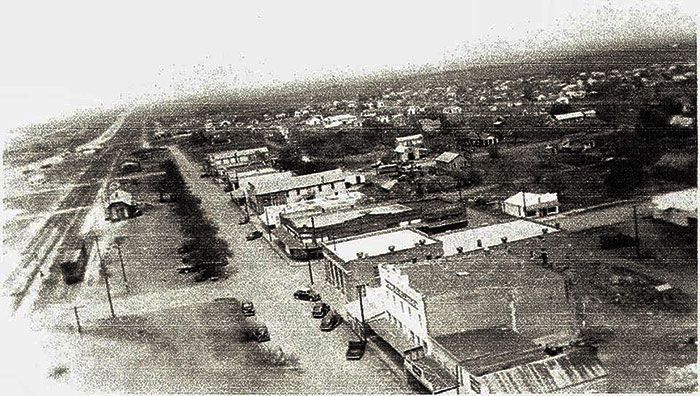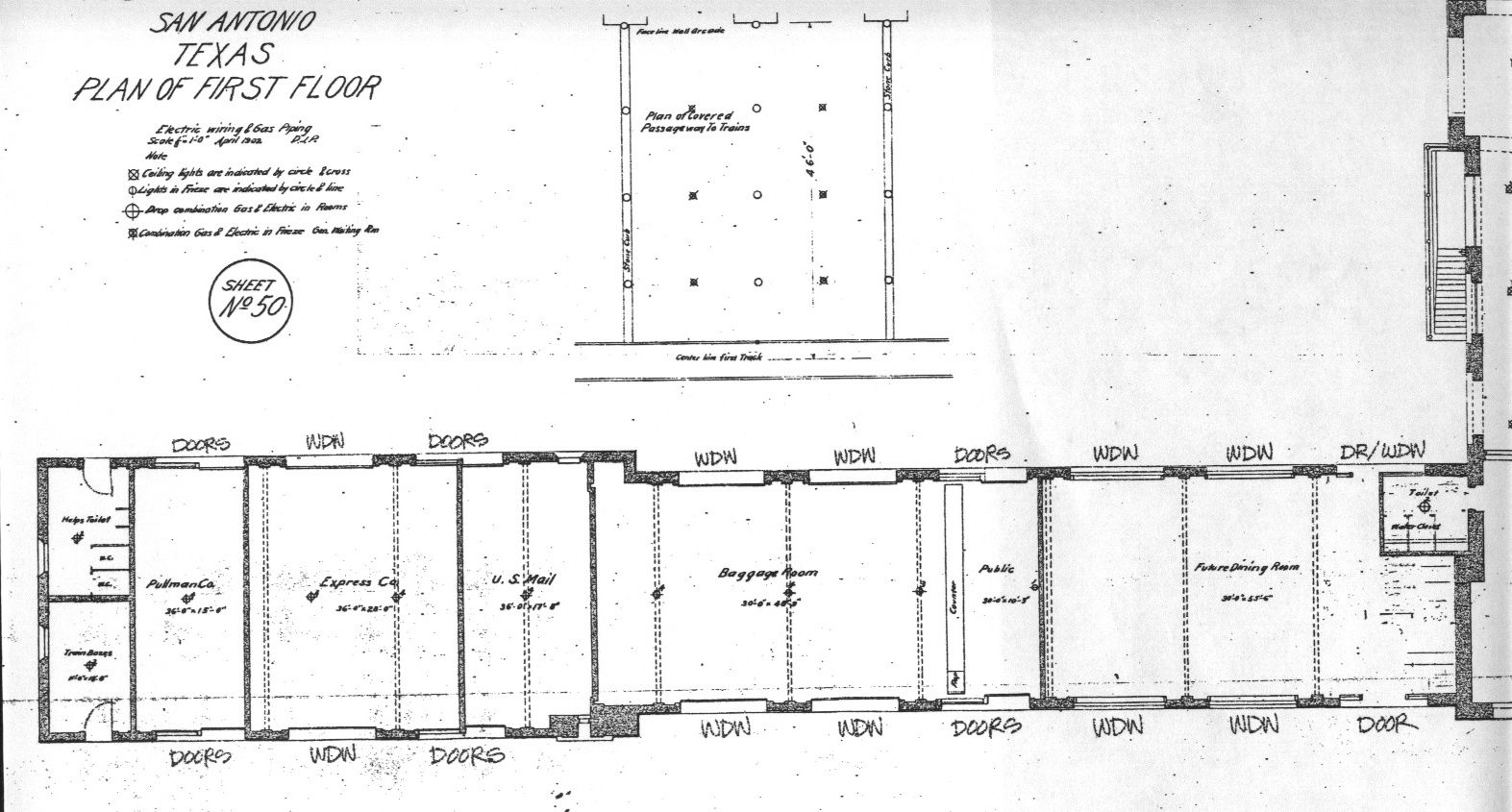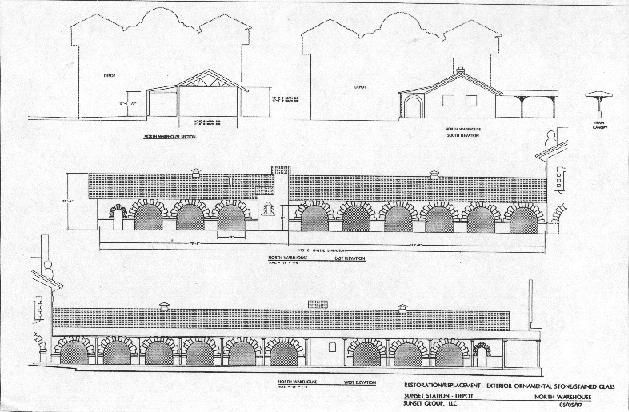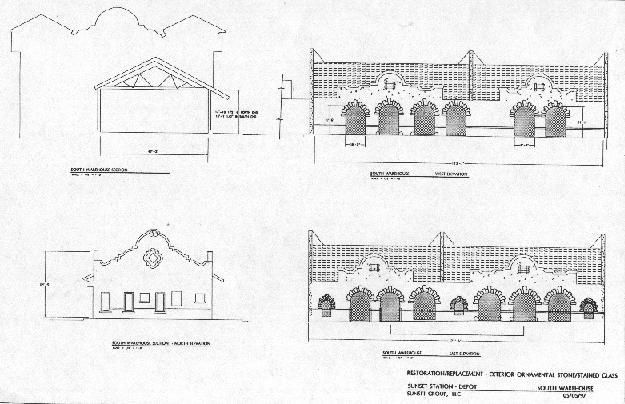The Railroad between San Antonio and Laredo
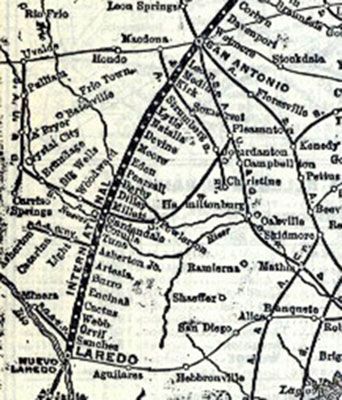
There were no communities of any consequence between San Antonio and Laredo until the construction of the International & Great Northern railroad. Although San Antonio had been in existence since around 1730, the area between it and Laredo was essentially undeveloped until the railroad age. Laredo itself had a population of just over 3,500 in 1880. By 1890, it was over 11,300. Because of the water and fuel needs of early steam locomotives, railroads had to have a stopping place every fifteen miles along the route. Where the railroad installed water pumps, small communities began to evolve. A small cattle stock yard would be established, with a store to sell supplies. This would become the post office, too. A few houses would be built, then maybe a small inn, then a church and before you knew it whole towns would emerge. The railroad encouraged such activity and often owned the land where the towns were created. Here are just a few of the communities built along the line between San Antonio and Laredo which is till very, very active, moing freight to and from Mexico.
Von Ormy
Von Ormy, in south west Bexar County was essentially created by the International and Great Northern when it built over the Median River on its way from San Antonio to Laredo. A small nearby community relocated to be nearer the tracks and adopted the name of a prominent Austrian Settler who came in, briefly, in the wake of the railroad. Following the pattern of many small towns, the community went through both highs and lows. The nadir was in the mid 60s when the population declined to only 150 people. Since then it has rebounded. In fact the city of Von Ormy was incorporated in 2008, much to the satisfaction of its growing population of around 1,600. The railroad, now operated by the Union Pacific, still passes through but the depot is long, long, gone.
Lytle
Lytle was created in 1881 when the railroad was built from San Antonio to Laredo by the International & Great Northern. Land for the depot and the right of way for the tracks was granted by John Lytle, who had been ranching in the area since the 1860s. The post office used his name in 1882. Due to a map reading error error, the depot was originally built in advance some two miles north of the where the tracks were actually laid and it had to be moved to Mr. Lytle's place and an original deed revoked on the other person's property.
Lytle is approximately twenty five miles south west of San Antonio and is the first town you reach by rail on the way to Laredo. It is in the northwest tip o Atascosa County. For many years, Lytle had the only railroad depot in the county. Today it has a population of around 2,400 people in 811 households. The railroad still goes right through town, though it no longer stops. The stock yards, once located beside the depot have also been moved away from the town's center.
Sometime after 1910, the depot was relocated to the other side of the tracks. It was also reconfigured to accommodate more freight at the expense of passenger space. Even by this early time, passenger business was dwindling. The last steam train to run was the "Sunshine Special," train No. 22. Engine No. 1160 had the honor. It was on November 22 in 1951. In 1960, all passenger and freight service to the town of Lytle ceased and the depot was sold at public auction.
A local man bought the old Lytle depot for $125.00. It then cost him $1,700.00 to move it five miles. It was so big it had to be cut in two to be moved. The new owner never rejoined the two halves. Its new role was that of an open barn. He stored hay in the passenger area and allowed animals to take shelter in the now open ended freight room. In 2003, a mini tornado destroyed the freight half but left the passenger section, just a few feet away, standing. The amazing thing is that the remaining section is in such good condition, bearing in mind it has been totally neglected for many years.
Devine
Devine was also established in 1881 with the arrival of the International & Great Northern. It was named after a fascinating individual, Judge Thomas Devine. He was born in Nova Scotia and ended up in San Antonio where he married, raised a family and is buried. He had a truly remarkable life. After he resigned from the Texas Supreme Court to look after his sick wife, he returned to private law practice. He must have provided some great service to the railroad. This was during a time when railroads in general and any company under the control of Jay Gould in particular, including the International and Great Northern, were extremely unpopular in Texas, an issue that politicians like soon to be Governor James Hogg used to their own advantage. Goulds companies were enmeshed in a very contentious battle over state compensation for the miles it had constructed. It should be noted there is no evidence that Judge Devine ever visited the town.
Devine is thirty five miles southwest of San Antonio, in Medina County. It has, today, a population of some 4,140. It has its own school district. Second to the arrival of the railroad in importance to the city's development was radically improved irrigation, which occurred in 1915. This really allowed the naturally good soil to reach its full potential. Vegetables, corn and small grains replaced cotton as the predominant crops. It is also a noted center for peanut production.
In the 1920s, natural gas and oil was found in the area, further propelling the town's growth. The railroad was vital in the development and shipment of all these valuable products. The town boasted not only a good sized passenger depot but a freight depot of some significance as well. As local demand for rail services declined, these were sold off by the railroad. The center of the town moved away from College Street when the Texas Department of Transportation widened HWY 173 and businesses moved to the new main thoroughfare.
The Devine railroad depot was purchased by a local developer who incorporated it in one of the most unique ways you may ever see. It was cut in two and each part was placed at the far ends of an 'L' shaped shopping development. The adjoining buildings are of different heights and widths, but they all were made to resemble outwardly the design of the depot. It is nicely done. Neither of the depot's original ends kept any of their interior fittings. These buildings were very well built and were sold off at amazingly low prices. This utilization is quite a pleasant way to build something based on local history. the structures are only a block or so away from the depot's new location.
Pearsall
Pearsall is located in Frio County, fifty-five miles southwest of San Antonio. It was named for a Vice-President of the International and Great Northern Railroad. It became the county seat in 1882. The previous county seat was Frio City, a few miles away. When the railroad came through most Frio City residents moved to be near the new depot. Over time Frio City has become a ghost town and today essentially it no longer exists. Its old court house still stands as do the ruins of its jail which once hosted the notorious James brothers, Jesse and Frank. Frio county was formed in 1870. Its recorded population was only 309 people, which had grown to 2,130 prior to the arrival of the International & Great Northern. Near to Frio city was a large well, used not only by locals but also by the many ox and mule pulled wagon trains. the railroad neatly circumvented rules against land ownership and acquired it in 1881. The resulting new town was given the name of a railroad vice-president, Thomas Pearsall. Over time, agriculture was steadily improved, and the area was also blessed with oil and natural gas. Pearsall now has a population of around 7,800.
Pearsall depot was sold around 1970. It was relocated just outside Devine and is now is use as a private residence. It is still very obviously a depot. The search continues for pictures of the depot in its original location. Meanwhile, the railroad, now owned by the Union Pacific, which merged with the Missouri Pacific in 1982, continues to thrive. The development of the Eagle Ford Oil shale project is causing something like boom town conditions in its corridor, which could lead to a large boost in freight business. The folks who built the International and great Northern, like Pearsall, way back in 1881, would be proud that the old I&GN, once nicknamed the "Irrelevant and Good for Nothing" is getting the last laugh.
Dilley
Dilley, about 16 miles south of Pearsall, was named for an International & Great Northern railroad official. The area was part of several large ranching operations due to its good water supply from the Frio River. It currently has a population of around 3,500 people.
Cotulla
Polish immigrant Joseph Cotulla created a town on his ranch, established in 1868, when the railroad came through in 1881. As usual, the railroad created a deep, reliable water well for its steam locomotives, and supplied the town as well, which was to everyones mutual benefit. The new town became the county seat of La Salle County in 1883. The search goes on for images of the I & GN depot in the town. The area became known for its production of Bermuda onions but farming efforts faded away after each drought, leaving the area with ranching as its principle activity.
Laredo
Although Laredo has one of the oldest crossings over the Rio Grande, it's significance was not all that great until the arrival of the railroads. First came a narrow gauge from Corpus Christi, which was completed in 1881. This was followed the same year by the International & Great Northern from San Antonio. With the arrival of rail service to Nuevo Laredo on the other side of the river in 1887 and the construction of the first rail bridge, Laredo's rise towards becoming the busiest inland port in the world was, literally, on track. The pouplation jumped from just over 3,500 in 180 to over 13, 300 by 1890. The city still has its two main original rail connections and the original Missouri Pacific station still stands though it has not served passnegers since the withdrawal of AMTRAK's "Inter-American," which never lived uo to its potential for moving people from the USA into Mexico and vice versa, in 1981.
Transportation Museum
CONTACT US TODAY
Phone:
210-490-3554 (Only on Weekends)
Email:
info@txtm.org
Physical Address
11731 Wetmore Rd.
San Antonio TX 78247
Please Contact Us for Our Mailing Address
All Rights Reserved | Texas Transportation Museum
